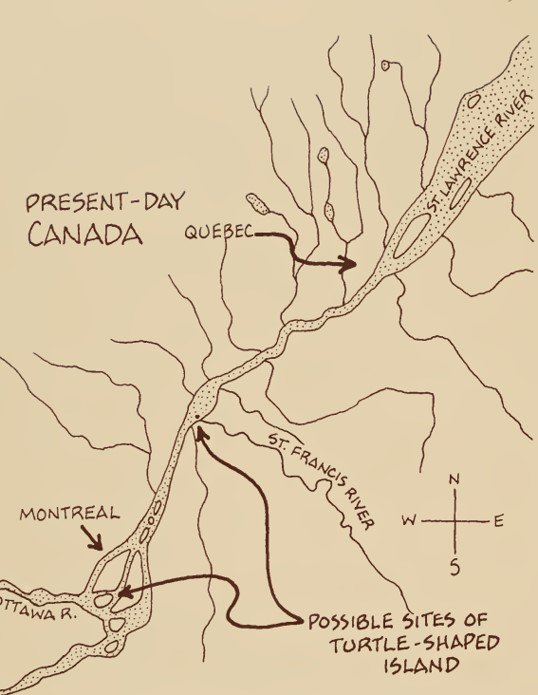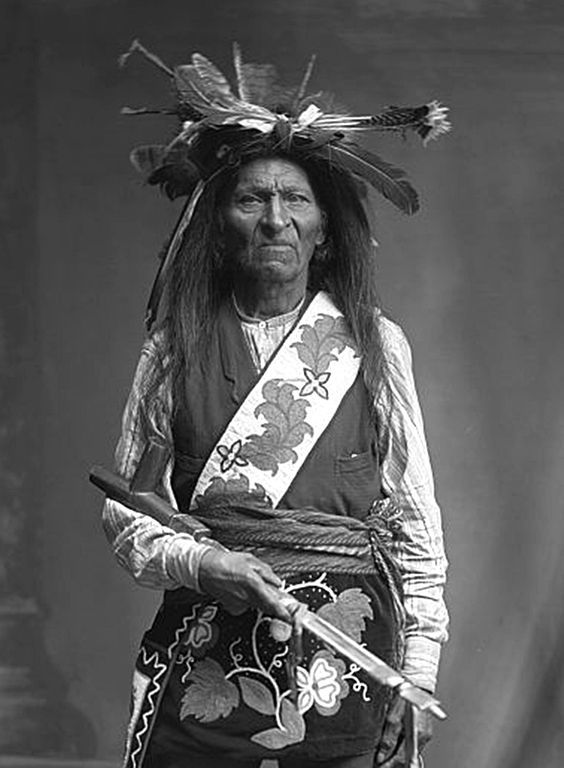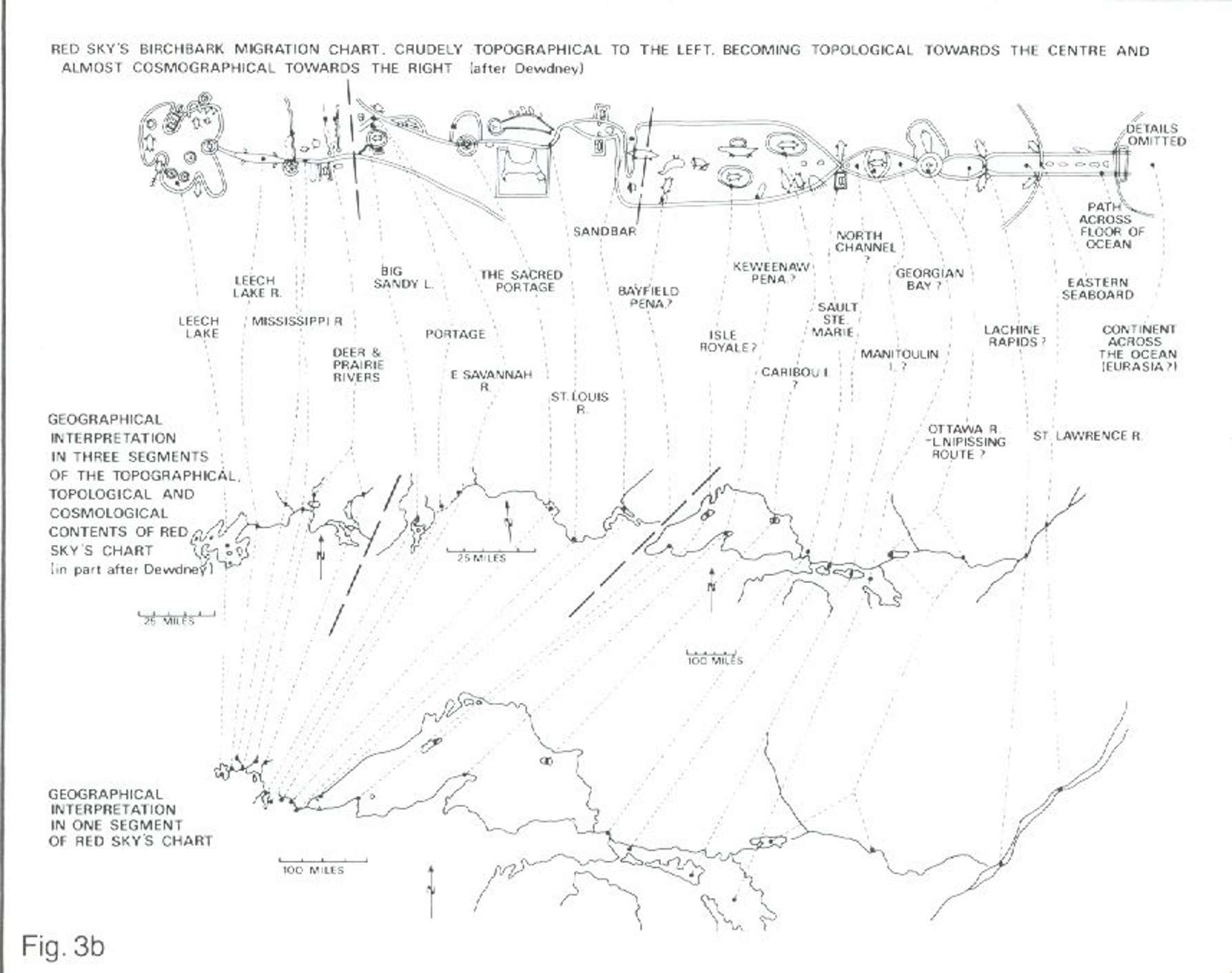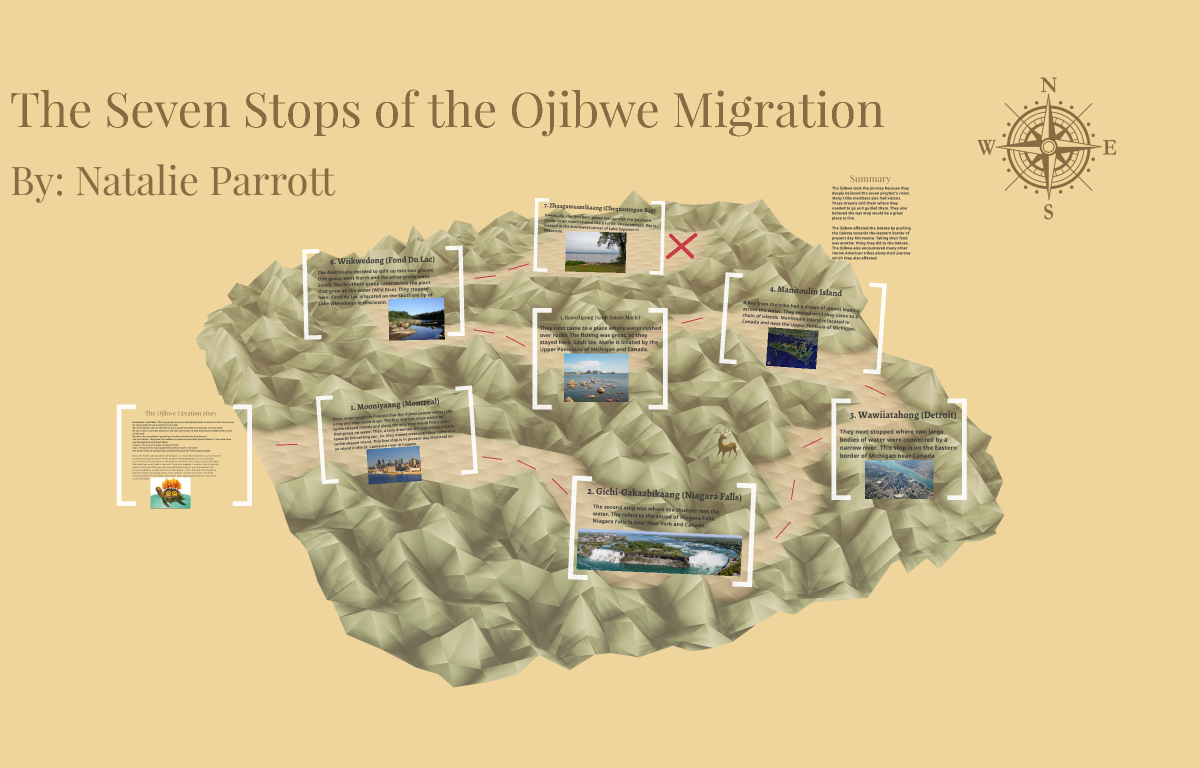
There is a turtle boat legend of the Ojibway people from 900 to 1400 AD time frame. They lived on the east coast of the United States, north of the St Lawrence seaway. In other words they already lived on the Atlantic Ocean shore of North America. This is after the defeat of the Nephites in 400 AD. This group of Lamanites may have remained around Cumorah after the battle and traveled north and settled north above the St Lawrence. This turtle boat legend describes their journey while still in North America going on their boats further west to the Great Lakes and settling near Wisconsin as their final resting place.
The Mishomis Book: The Voice of the Ojibway
by Edward Benton-Banai
After the final battle of Cumorah. It makes sense that the remaining Lamanites (Some the Ojibway) may have traveled north and settled in Canada on the Atlantic coast line where this legend begins.

Chapter 14 The Migration of the Anishinabe Page 94
Boozhoo, I am going to try to reconstruct the chi-bi-moo-day-win’ (migration) of my Ojibway ancestors. I will draw upon the words given to us by the prophets of the Seven Fires. I have also looked at old maps of North America that might give hints to places referred to by the seven prophets and by my grandfathers. Finally, I have listened to what the scholars have had to say about early written accounts of this country. When the seven prophets came to the Anishinabe, the nation was living somewhere on the shores of the Great Salt Water in the East (Atlantic Ocean). There are many opinions about where this settlement was. It is generally agreed that the Ojibways and other Algonquin Indians were settled up and down the eastern shores of North America…
They used the waterways of the land to travel by canoe. They had a system of overland trails. They used sleds and dog teams to travel in the winter. Life was full for the people here. The Clan System and its government were strongly enforced. There was ample food from the land and sea, and there were fish from many rivers…
Today, it is speculated that these were the people living on the east coast of Canada that the French called the Abnaki. The prophet of the First Fire had told the people: “If you do not move, you will be destroyed.” It would come to pass that most all those who stayed behind, including the Daybreak People, were destroyed or absorbed by the Light Skinned Race at the coming of the Fourth Fire. The Mide people remembered the words of the prophet of the First Fire. He had spoken of a turtle-shaped mi-ni-si’ (island) that would be the first of seven stopping places during the migra¬ tion. Some people thought that this island of the beginning of their journey was surely a place of great power and that they were to go there and await further instructions from the Creator. Others thought that those who accepted the words of the prophets should seek out this island and go there for Sweat Lodge and purification ceremonies. Still others felt that the search for the island was a test of their strength by Gitchie Manito.
 There was a great search throughout all the waters of the land for this island… Such an island was finally found in the St. Lawrence River. There has been much discussion today as to where this first stopping place of the migration was located. There is a place a short way northeast of present-day Montreal where the St. Francis River runs into the southern shore of the St. Lawrence. This is the only river of the region that flows to the West. At the place where this river joins the St. Lawrence there is a small island. Many years ago, the French found a fairly large Indian village on the mainland just across from the island.
There was a great search throughout all the waters of the land for this island… Such an island was finally found in the St. Lawrence River. There has been much discussion today as to where this first stopping place of the migration was located. There is a place a short way northeast of present-day Montreal where the St. Francis River runs into the southern shore of the St. Lawrence. This is the only river of the region that flows to the West. At the place where this river joins the St. Lawrence there is a small island. Many years ago, the French found a fairly large Indian village on the mainland just across from the island.
Some people today think that this island was the first stopping place of the migration. Others have pointed to a small island just where the Ottawa River joins the St. Lawrence at Montreal. The Ottawa River runs in line with the path of the Sun but it flows to the East. It is likely that the main body of the migration camped on and around one of these islands. There were many Spirit Ceremonies and cleansing ceremonies held there as the people sought additional instructions. After some time, the people resumed their journey to the West…
Their second major stopping place was at the Ani-mi-kee’ wa-bu (the place of the Thunder Water). This is very likely the place referred to by Waynaboozhoo on his journey to find his father and the place the Ojibway lather called Kirchi-ka-be-kong’ (Great Falls).
The water and thunder came together here and made a powerful place. When the people stopped here, the Sacred Megis Shell rose up out of the water and greeted them. The Sacred Fire was moved to this location for some time. This place is better known today as Niagara Falls…
It was at this second stopping place that the Anishinabe drove back a large group of Iroquois warriors who were pursuing them. Later, the Iroquois gave the Ojibway a Wampum Belt made out of a very special kind of shell. The O-pwagun (Pipe) was shared among these two nations. At last peace was sealed between them…
All the Anishinabe people became known as the nation of the Three Fires to recognize how these groups provided for all their needs. There were those among the Three Fires that were known as peace makers…

The Three Fires were later courted heavily by Indian leaders from East to join combat expeditions against the Light-skinned Race. Certain ones responded to these requests but never was there a massive military effort on the part of the Three Fires…
One of the prophets long ago had spoken of a turtle-shaped island that awaited them at the end of their journey. The southern group had seen an island fitting this description that lay in the water off of a long point of land. The people sought out this island and placed tobacco on its shore. The Sacred Shell rose up out of the water and told the people that this was the place they had been searching for. Here, the Waterdrum made its seventh and final stop on the migration. The Sacred Fire was carried here and here it burned brightly. This island was called Mo-ning-wun-a-kawn-ing (the place that was dug) by the Ojibway. It was later called Madeline Island (Wisconsin). This name has survived to this day. The main body of the Anishinabe people gathered here and they became strong and powerful. At last the migration to the chosen ground was at an end. It is thought that the migration started around 900 A.D. It took some 500 years to complete. It is amazing that the Sacred Fire could be kept alive for so long. The dream of the original seven prophets was carried for many generations. It was carried along a string of fires with many campfires left behind. That the people were able to accomplish such a thing is truly a miracle of the Creator. We descendants of these great people can gather strength from their strength. We can gather courage for our lives today from their courage of yesterday.” The Mishomis Book: The Voice of the Ojibway by Edward Benton-Banai https://groups.google.com/g/fladimor/c/XeZdF8MQgu4

Red Sky’s Migration Chart With Geographical Interpretation Below:
A wiigwaasabak is a birch scroll, sewn together with cedar roots, used ceremonially by Ojibwe medicine men. They use geometric diagrams to explain many complex things and have been handed down for generations. This particular 2.6-meter long wiigwaasabak was made by Eshkwaykeeshik (James Red Sky). It recounts the historical journey of the Ojibwe people from their home along the Zhiiwitaagani-gichigami (Atlantic Ocean) to the Nayaano-nibiimaang Gichigamiin (Great Lakes) which occurred in the 14th and 15th centuries.

“After the Great Manito of God had created all creatures on earth, he found they were dying off and decided he needed to get them to worship him, but he didn’t know how so he called a meeting of all the birds and all the creatures on earth to talk about it ‘somewhere across the Big Water, where this Manito was.
The Manito needed someone to take his message to the people and asked who would do it. The Bear was there and said, ‘I’ll take it across to the people.’ The Bear went off with the message of Everlasting Life, but it was very heavy to carry and he could hardly walk. When he came to a wall, he couldn’t get through it at first until he stuck his tongue out, which made a hole that he could get through. He did this each time he came to a wall, and the four wind manitos stationed at each of the cardinal directions thanked him for the work he did. He came upon four walls before he finally got through to Midewegun or Mide lodge.
The Bear had successfully carried the Pack of Life thus far when he met Megis, the shell, who took over the trek down the St. Lawrence River to Montreal, past the Lachine Rapids to Mattawa, on down the French River to Lake Huron, through the Straits of Mackinac to Sault Ste. Marie.
Somewhere along this stretch of the journey the Megis transferred the Pack of Life to the Otter, who carried it along the south shore of Lake Superior to the Keeweenaw Peninsula, on to LaPointe in Wisconsin, breaking through a sand bar at Fond du Lac at the west end of Lake Superior and travelling up the St. Louis River westward to Leech Lake.”
~ Eshkwaykeeshik (James Red Sky)
Sources:
https://decolonialatlas.files.wordpress.com/2015/05/d0305-redskymigrationchart2.jpg
http://territories.indigenousknowledge.org/exhibit-4/2.html






